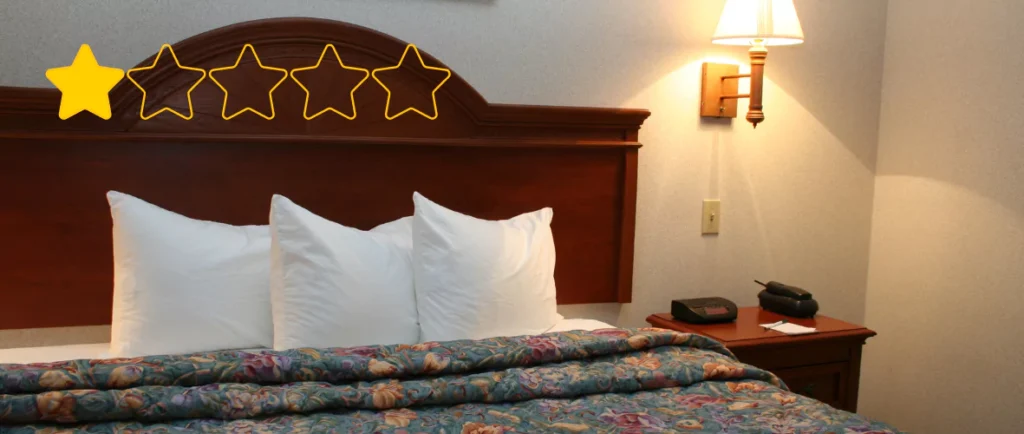The star rating is a crucial consideration for travelers when making hotel reservations. But what do those representations, ranging from 1 to 5, mean? This article will explain the various hotel star ratings and the amenities available at each level.
What System Do Most Countries Use?
The most widely adopted classification system is from 1 to 5 stars, with 5 stars signaling the most luxurious accommodations. This rating scale originated in Europe in the 1930s under the International Hotel stars Union and has since been implemented globally by most national hotel associations and chains.
The criteria considered vary between regions but generally, assessments cover facilities, room size and amenities, service standards, food quality if breakfast is included, and overall perceived value about price point. However, ratings are not fully standardized so two 3-star hotels may provide somewhat different experiences.
What do 1-Star Ratings Offer?

Hotels awarded a single-star rating provide basic, no-frills lodging focused on necessities. Expect simple, small rooms with necessary furnishings like a bed and sink. Some shared bathroom facilities may be common. Services are minimal without daily housekeeping or 24/7 staffing. Breakfast likely requires an additional fee. Wi-Fi could be an extra as well. Properties falling in this range serve as affordable options for overnight stops.
Generally found further from city centers, 1-star hotels remain a cost-efficient choice, particularly for those on tight travel budgets. However, such properties offer little in terms of comfort or amenities beyond a place to sleep. These are best suited for basic overnight accommodation needs alone.
How do 2-Star Ratings Improve?
Compared to 1-star properties, 2-star Hotel Star Ratings indicate a superior level of lodging that provides somewhat more comfort and services included. Rooms will be cleaner and larger along with private bathroom facilities as a standard feature. Television, telephone, and basic amenities like soap/shampoo may now be included.
Daily housekeeping and front desk staffing during set hours allow for more reliable service standards. Breakfast buffets or vouchers at local cafes frequently complement stays. Basic fitness facilities or an outdoor pool could be advertised as well. Locations cover suburban strips and budget-minded options near city centers. Overall this mid-tier pricing offers improved value vs an equal-priced 1-star alternative.
What Level are 3-Star Hotels?

Rated as mid-range accommodations, 3-star properties provide a well-rounded hotel experience. Expect large, well-maintained guestrooms with quality furnishings and upgraded amenities like hair dryers. Most include mini-fridges, desks/seating areas, and premium bedding. Onsite dining plus 24/7 staffing assure convenience.
Daily maid service keeps rooms pristine while fitness centers and rooms with extra facilities cater to business/family needs. Well-reviewed 3-star chains occupy ideal city center locations near attractions. Extras like indoor pools are common. Though variations exist, this mid-tier rating delivers consistency at an affordable price point for leisure or business travel stays.
How do 4-Star Ratings Elevate the Experience?
Taking lodging upmarket, 4-star Hotel Star Ratings indicate a refined quality of facilities and services. Spacious guest rooms feature premium comforts like premium TVs, workspaces, and luxurious bedding/bath fixtures. Most properties offer premium dining onsite and regular complimentary breakfast buffets for convenience.
Fitness centers receive upgrades while full-service spas and pools with cabanas increase resort features. With 24/7 concierge assistance, business centers support productivity. The staff aims to anticipate needs. Prime city locations position 4-star hotels near top attractions for utmost comfort. Additional amenities lift stays above standard expectations. Ideal for special occasions or prolonged vacations.
What Distinguishes 5-Star Properties?

As the highest tier within the Hotel Star Ratings system, 5-star properties provide impeccable, ultra-luxurious hospitality experiences. Lavish rooms and suites come appointed with high-tech conveniences and high-end linens/fixtures. Multiple on-site gourmet restaurants complement dedicated room service.
Exclusive spa and fitness centers, pools, and children’s facilities cater to all needs. Attentive butlers handle every request. Prized addresses peer-over landmarks in the most desirable destinations worldwide with impeccable service as standard. Significant additional fees are common yet compensated through indulgent perks. These pinnacle properties suit discerning elite travelers.
Conclusion
In conclusion, hotel star ratings offer valuable at-a-glance insights but minor subjective variations do occur between similar-classed properties based on location, amenities bundle, or service focus. Still, they provide a helpful framework for matching expectations with specific needs to enhance travel experience value. Higher ratings generally correspond to premium comfort levels.













